Editor's Corner: To Seek the
Bright Enchanted Gold
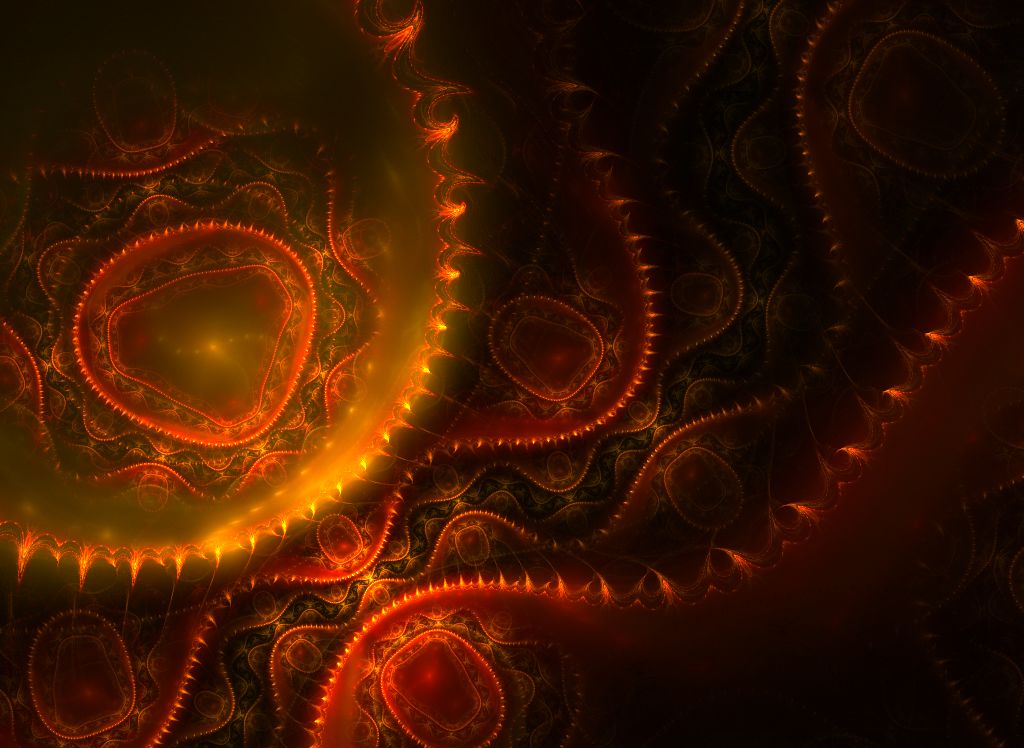
Enchantment
In the March Peaceable Table, I reflected on the theme from The Lord of the Rings of the soul-preserving effects of Bilbo's act of pity as he took possession of the perilous Ring of Power. Although he owned it for over sixty years, he was very little corrupted by its evil. Conversely, Gollum's original act of murdering his companion as he stole the Ring had the effect of rapidly addicting and enslaving him to the Ring, and destroying all ties to others.
In a world in which everything is (to
some
degree)
alive and linked to all other things, one's will, intention, speech,
and deed
all
have power--for good or for evil, to preserve mind and soul or to
corrupt and
destroy them.
The enchantment that pervades Middle Earth is especially
concentrated in particular places and objects, especially the One Ring
and the other Great Rings. Such enchanted objects often
have as
their ground metal and stone--especially gold and rough
gems--that are
formed into things of beauty and power by metalsmiths and gemcutters
skillful of hand and learned in the lore of magic. Of the various
races--or rather rational species--of Middle Earth, dwarves are
particularly involved in the crafts of creating beautiful objects of
metal and gems; they have a deep love for their golden treasures, a
love that is both sensitive appreciation of beauty, and a
susceptibility to
greed, which sows discord and violence. Greed has been called the
root of all evil; it is certainly deeply involved in the systemic evils
done to animals.
The Antipodes
What is it about gold and worked gems--singularly useless things
from a practical point of view--which gives them so magnetic a power
both in Middle Earth and in our own world? Aldous Huxley
suggests, in his essay "Heaven and Hell," that they give us some
access to
a
region of consciousness he calls the "antipodes of the mind."
This realm is
far from the familiar everyday mindset in which we rush about, worry,
jockey to get ahead, or suffer boredom. In the visionary world of
the antipodes, being matters
more than doing. Things
exist for their own sakes, beautiful and wonderful and precious.
They may glow with an inner light; they arouse awe. These
qualities apply not only to crafted objects but to living things:
flowers, fruit, animals, human beings, nature spirits, angels. To
see or sense them is to be rapt, to be in love while one is
gazing.
 Churches
and temples
may seek to call this dimension of Reality to our awareness by
employing
gold, gems, stained-glass, chalices, flames atop gleaming
candlesticks in a vast, dim interior. Verbal pictures of heaven
or the afterlife may be
similar: a Western Paradise of gems and marvelous bird music, or
a New
Jerusalem with gates of pearl, foundations of gems, and streets of
gold. Story, art, and life shape one another; many people who
went through
Near-Death Experiences tell of having been in a city with gleaming
streets,
or strolling through paradisal scenes with flowers, trees and grass of
luminous beauty,
inhabited by marvelous human or angelic figures radiating love.
Churches
and temples
may seek to call this dimension of Reality to our awareness by
employing
gold, gems, stained-glass, chalices, flames atop gleaming
candlesticks in a vast, dim interior. Verbal pictures of heaven
or the afterlife may be
similar: a Western Paradise of gems and marvelous bird music, or
a New
Jerusalem with gates of pearl, foundations of gems, and streets of
gold. Story, art, and life shape one another; many people who
went through
Near-Death Experiences tell of having been in a city with gleaming
streets,
or strolling through paradisal scenes with flowers, trees and grass of
luminous beauty,
inhabited by marvelous human or angelic figures radiating love.
They also tell us that the region of the antipodes is not limited to
another
world; it is also right here, in our familiar world. Mystics and
returning
Near-Death experiencers often are enchanted by ordinary things; they
now stop to smell the flowers and rejoice in the grass and the sky and
the birdsong,
rather than rushing through the world as they did when they were
unawakened to its splendor. They care about ordinary people,
including strangers,
rather than being oblivious to them or wanting to make use of
them. The world is full of wonders.
The Treasure and the Dragon
The golden and begemmed treasures that Tolkien's dwarves created and
love with such passion symbolize this supernal splendor
that fills the world; it is invisible to most of us, yet we seem to
hunger for it. In crafted gold objects, or even just raw gold,
in the
gleam of jewels, the Splendor seems closer to the surface of the world
and accessible. We can almost touch the Glory; we think we can
own
it. Some wealthy people are willing to pay huge sums to be able
to call a
multi-diamond and gold necklace or a ruby tiara their property,
Ironically, such high-value jewelry may lie unseen in a bank vault
most of the time; the owner may even have a cheaper copy of it made
which she wears to important events. The reason, of course, is
that its pricy-ness not only arouses admiration and envy in others, it
attracts
thieves and robbers willing to put their envy into violent action.
Not only in The Hobbit,
but in many tales and legends of European origin, this hunger for the
Divine Splendor
which attaches itself to a specific thing and thus turns to the
consuming fire of greed is represented by a dragon. In
Tolkien's story, the dragon Smaug had heard stories about the vast
treasures
the dwarves had mined, created and amassed in their cavern-city under
the Lonely
Mountain. He
flew down breathing fire, killing many people in the nearby town of
Dale, as well as
many of the dwarves in their underground halls, and claimed the
treasure
as his own. He could not use it, nor really enjoy it, and
certainly could not have the joy of giving or sharing any part of it;
he
simply
heaped it up and lay on it, reveling in Ownership, ready to blast with
fire any rival
claimants.
At the extemded climax of The
Hobbit, as the dwarves and Bilbo work to outwit the dragon and
regain the treasure, we see the power of burning greed appearing not
only as
the huge, cruel reptile on his hoard, but in the heart of some of
the dwarves
themselves. When the people of Lake-Town who had suffered dragon damage
ask for a share of the treasure to rebuild, the leading Dwarf, Thorin,
and his loyalists let their fierce love for their golden treasure turn
into
the fierce possessiveness
that will fight and kill rather than share.
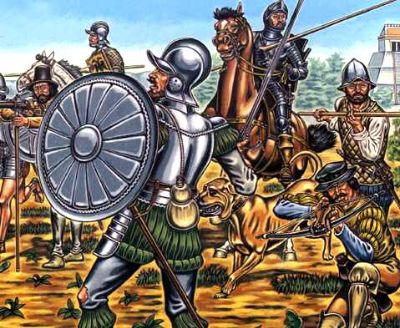 In our own world, countries that conquer other
peoples are usually
motivated in a major way by dragon-greed. Sometimes this has been
a literal lust for gold: Smaug swept down on Central and South America
in the
sixteenth century and beyond, his burning breath destroying
millions of
human beings, both deliberately and with casual half-awareness, as he
amassed
his
hoard. In other instances, empire builders have sought to aquire
wealth in other products--fine fabrics, bananas, oil, land, or what
have you, usually with similar costs to the expendable human beings
born in the wrong place at the wrong time.
In our own world, countries that conquer other
peoples are usually
motivated in a major way by dragon-greed. Sometimes this has been
a literal lust for gold: Smaug swept down on Central and South America
in the
sixteenth century and beyond, his burning breath destroying
millions of
human beings, both deliberately and with casual half-awareness, as he
amassed
his
hoard. In other instances, empire builders have sought to aquire
wealth in other products--fine fabrics, bananas, oil, land, or what
have you, usually with similar costs to the expendable human beings
born in the wrong place at the wrong time. In such cases the link to actual gold and gems may seem quite tenuous, but, interestingly, the image of gold continues to be applied to such objects of greed, both in regard to individuals and to groups. In Dickens' Christmas Carol, when
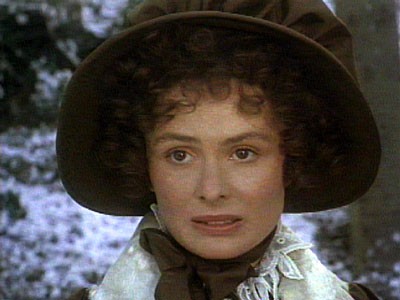 the
young Scrooge's fiancee ends their relationship, she says sadly,
"Another idol has replaced me. . . . A golden one," although
the restless, ambitious Scrooge was probably not literally heaping up
golden guineas, but boosting the figures in his bank book.
Similarly, we speak of
plutocrats as following their own "Golden Rule" --"Those with the gold
make the rules"--although much of the time the wealth of the "one
percent" is in even more abstract form, blips on computer screens,
winging electronically around the world. Nonetheless, it is still
transformable into luxury objects: yachts and cruises,
beautiful homes (one political figure couldn't recall how many
he had!), pricy
cars and clothes, as well as lustrous golden and begemmed jewelry.
the
young Scrooge's fiancee ends their relationship, she says sadly,
"Another idol has replaced me. . . . A golden one," although
the restless, ambitious Scrooge was probably not literally heaping up
golden guineas, but boosting the figures in his bank book.
Similarly, we speak of
plutocrats as following their own "Golden Rule" --"Those with the gold
make the rules"--although much of the time the wealth of the "one
percent" is in even more abstract form, blips on computer screens,
winging electronically around the world. Nonetheless, it is still
transformable into luxury objects: yachts and cruises,
beautiful homes (one political figure couldn't recall how many
he had!), pricy
cars and clothes, as well as lustrous golden and begemmed jewelry.Another crucial common factor is the psychological state of mind of those driven to amass gold, real or virtual. It is often imaged by a thirst or hunger that cannot be satisfied, however great the heap, however astronomical the computer figures. In accordance with this observation, it is rare for obscenely wealthy people to give in proportion to their worth; their seemingly lavish donations to charitable causes are in most cases miniscule when compared to their totals. It has been claimed that a major reason for this disparity is that wealth also means power; and those hungry for power cannot get enough, either. Smaug and Sauron are siblings.
Does not an infinite craving for "gold" suggest that the true object of their desire is also infinite, the Splendor of the divine Presence throughout the universe?
There's Gold In Them There CAFOs
Not only are super-wealthy people reluctant to give in proportion to what they possess, most whose enterprises are based on exploitation ferociously resist any reforms, however modest, that might diminish their take by easing the suffering of their victims. This is hardly news to those of us who find ourselves pitted against animal agriculture's various campaigns--campaigns against anyone pointing out problems in their products (e.g., the Animal Enterprises Terrorism Act and state "food libel" laws), against state referendums to end caging, against undercover invetigations of cruelty (see "Ag-Gag Bill Developments" below), and, perhaps even more horribly, against a state law requiring the euthanizing of "downer" animals. Recently the US Supreme Court unanimously voted in favor of a suit brought by the National Meat Association, challenging the California law enacted as a result of the airing of a HSUS video documenting terrible abuses. The profits from slaughtering downed animals are a relatively small part of their total, but they are very unwilling to lose that small part; they are determined to continue to torture those of their victims in the very worst anguish in order to wring out every cent of profit.
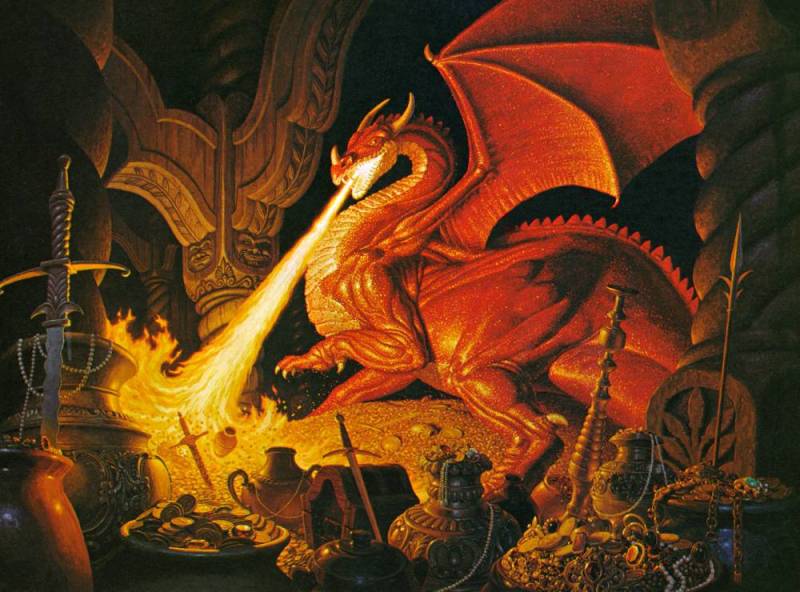 Readers of The Hobbit
will remember that Smaug behaved similarly when he realized that an
intruder had removed one cup from his mountainous heap of
treasure. "Thieves! Fire! Murder! Such a thing
had not happened since first he came to the Mountain! His rage
passes description--the sort of rage that is only seen when rich folk
that have more than they can enjoy suddenly lose something that they
have long had but have never before used or wanted. His fire
belched forth, the hall smoked, he shook the mountain-roots . . .
." Unable to incinerate the actual "thief"--Bilbo, acting on
behalf of the dwarves reclaiming their own--he flies down to Lake-Town,
intending to set the town afire and burn alive everyone in it.
Readers of The Hobbit
will remember that Smaug behaved similarly when he realized that an
intruder had removed one cup from his mountainous heap of
treasure. "Thieves! Fire! Murder! Such a thing
had not happened since first he came to the Mountain! His rage
passes description--the sort of rage that is only seen when rich folk
that have more than they can enjoy suddenly lose something that they
have long had but have never before used or wanted. His fire
belched forth, the hall smoked, he shook the mountain-roots . . .
." Unable to incinerate the actual "thief"--Bilbo, acting on
behalf of the dwarves reclaiming their own--he flies down to Lake-Town,
intending to set the town afire and burn alive everyone in it.The reason behind this response of heartless violence is not only infinite greed; it is that those burning with dragon-fever fear a slippery slope. One reform may lead to another, until they are left with an income that is no longer gargantuan and ever-growing, but diminishing until it is merely large, which to their mind would mean powerlessness, indigence; defeat--infinite loss.
The dragon-fevered also do not know themselves, nor do they always think clearly. In Smaug's rage against the Lake-people whom he supposes to have helped the dwarves, he did not know about a certain vulnerable spot on his underside. He also reckoned without the valor and skill of a resident of LakeTown named Bard, who, during Smaug's flaming rampage, shot an arrow into it and killed him. Had he simply accepted the loss of the cup and stayed on his horde, he probably would have remained in possession of the rest. He over-reached and lost everything.
We have reason to hope that the actions of the animal-agribusiness plutocrats intent on smashing anyone who threatens even a minor inroad on their treasures will prove similarly self-defeating. Upon occasion, as with the suit of Texas cattlemen against Oprah Winfrey and Howard Lyman for supposed violation of "food libel" laws, the outcome is a long, sensational trial that gives their opponents chances for media airing of their views before giving them victory. We may hope that other power-politicking actions such as the noxious ag-gag laws--which so obviously show that the agribusiness lords have a lot of stench to hide and care nothing for either human or animal welfare--may end similarly. But standing in the midst of time as we do, it is hard to put the victories of our cause in a balance with our defeats. It will be a long, grueling struggle; and facile expectations of victory are unwise. "It does not do to leave a live dragon out of your calculations, if you live near him" (Annotated Hobbit, p. 272)
"Full of Thy Glory"
A major theme in The Hobbit (and The Lord of the Rings) is the surprising power of the small and apparently powerless. The pint-size hobbit hero is beneath contempt to the mighty Smaug, but in fact he is resourceful, unselfish, dedicated, and "as tough as old tree-roots." One reason for Bilbo's ultimate victory over evil is that overall, he knows when he has enough. At times he feels the magnetic lure of the golden treasure, but he curbs it; e.g., rather than keeping the marvelous Arkenstone for himself, he gives it away to try to bring peace. He asks for only a small portion of the treasure as his commission. In keeping with this refusal to become addicted to gold or center his life around it, he takes pleasure in small, ordinary things in daily life: socializing with visitors, breakfast, blowing smoke-rings from his pipe, basking in the sunshine in his garden, storytelling and song, writing his memoirs--not to mention Gandalf's rarely-seen fireworks.
For some persons, such attention to small pleasures may be merely a sign of complacency and limited horizons, but it may also mean that one senses, dimly or clearly, that the divine Splendor, the golden glory, is is here and everywhere we turn. Heaven is in a wild flower; one can no more own It that one can own the sun or the stars. As the narrator in Harvey Gillman's poem (see below) says, angels are treading lightly on the unploughed earth of the hill we just climbed; the cows in the field before us are ministers of messages from the Spirit; their eyes are heavy with eternity. They are not hard gold on the hoof; they are bearers of living Light.
We must often turn to the true source of joy for refreshment in our arduous Adventure..
--Gracia Fay Ellwood
The lead illustration, "Smaug's
Treasure," is the work of "Dark Angel."
The stained-glass window, by Dieter
Goldkuhle, is in the National Cathedral.
The young woman in a bonnet is Lucy
Gutteridge as Scrooge's fiancee Belle in the 1984 Christmas
Carol (starring George C. Scott).
News Notes
Ag-Gag Bill Developments
Despite defeats last year, animal agribusiness industries have been
working to introduce gag bills criminalizing undercover filming
in several farm states: Iowa, Indiana, Minnesota, Illinois,
Florida, Missouri, Nebraska, New York, Tennessee, and
Utah. So far, Illinois, Indiana and Florida have defeated them;
Iowa and Utah have passed them. See Utahwww.mfablog/2012/03/how-big-ag-bought-iowas-ag-gag-law.html
-Contributed by Lorena Mucke
"People love darkness rather than light, because their deeds are evil." (John 3:19)
(Red-) Meatless Diet Trumps Locavorism
An analysis in the Journal of Environmental Science and Technology shows that “Shifting less than one day per week's worth of calories from red meat and dairy products to chicken, fish, eggs, or a vegetable-based diet achieves more greenhouse-gas reduction than buying all locally sourced food." See Less Meat & Dairy . (Still better, make it vegan seven days a week.)--Contributed by Lorena Mucke
Go Veg, Cheer Up
In a pilot study described in Nutritional Journal, thirty-nine omnivores were randomly assigned to one of three diet regimes: omnivorous, veg-plus-fish, or vegetarian. For some in the last-named group only, there were signs of reduced stress and improved mood after just two weeks. See Cheer Up .--Contributed by Lorena Mucke
Unset Gems
Not only around our infancyDoth heaven with all its splendors lie;
Daily, with souls that cringe and plot
We Sinais climb and know it not.
--James Russell Lowell
Letters: Judy Carman, Carl Sheppard
 Dear Peaceable Friends,
Dear Peaceable Friends,Let's all join together this week (and beyond) and pray for the baby seals who are being relentlessly killed on ice floes near the east coast of Canada, and for their anguished mothers as well. According to PETA, the U.S. and the E.U. "have both banned the import of seal products, and in December, Russia became one of the latest nations to do so following thousands of letters..." PETA also noted that, in spite of the fact that the industry is collapsing and in spite of the worldwide outcry over the senseless massacre, the Canadian government is considering storing the pelts hoping to find a future market for them.
In addition to the seals themselves, let us all hold in our prayers the perpetrators of this violence. Any person who engages in such horrific killing, especially of helpless babies, is scarred and traumatized by the horror of what they have done. They are most likely not consciously aware of their inner trauma, but it is there. Their hearts have had to grow as cold as the ice on which they kill, and that is a source of immense inner turmoil and suffering. And with such icy hearts they cannot see the astonishing beauty and wonder of these precious babies. Instead of opening their hearts, they are killing their own souls.
If you wish to also sign a petition to stop the hunt, you can go to the Humane Society of the U.S. website. See Petition www.humanesociety.org/issues/seal_hunt/ .
--Judy Carman
Dear Peaceable Friends,
I was happy that my letter about my experience on my uncle's and aunt's farm made it into the March PT. But I wish I'd have made a brief mention that I later gave up eating other animals as well as the chickens I first felt compassion for, and their eggs as well.
In the review on How the Dog Became the Dog, Robert used the quotation "More profoundly, and mysteriously, human and wolf both recognized at some primal level that they belonged together." I think that is an interesting concept to consider regarding all [companion] animals. House cats also came from much wilder species, but have found a sense of belonging with humans so well expressed by their "give me attention" rubbing against a person's legs. . . . My step-mom kept parakeets that were so content living in her home that she could leave the doors open and they would not fly away, even though she left their wings unclipped . . . she said that flying was probably one of their greatest joys.
Similarly, my family had a capuchin monkey as a pet when I was a young boy. It escaped several times, and would make his way to a nearby park and play in the trees for awhile, but then he would come back to be with our family, the place where he seemed to feel he belonged. (It's funny, as I wrote this I caught myself referring to "Chipper" our monkey as "it" instead of "he." Just see how society conditions us! . . . .
--Carl Sheppard.
Did You Miss This One?: Zachariah
Zachariah. A 1971 film
distributed by Cinerama, produced by George England and Lawrence
Kubrik, directed by George Englund. Starring John Rubinstein as
Zachariah and Don Johnson as Matthew. Based (loosely) on the novel Siddartha by Herman Hesse. Music by Giaocchino
Rossini and Doug Kershaw. 93 minutes.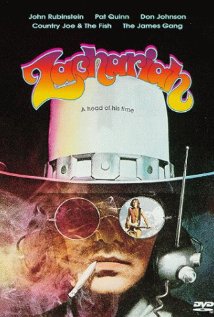 This film has been described as "an electric Western," and
"A surreal, and sometimes moving, rock-musical Western about the
psychedelic adventures of two gunslingers in love." Zachariah and
Matthew are young men living in a one-horse town in the
Old West (not as it really was, but as mythologically imagined).
Wishing to escape from their very boring and constricting experience,
as soon as they acquire handguns they join a passing band of
gunslingers (who are also rock musicians, and much better at that than
at crime). Zachariah and Matthew both try to find spiritual
self-fulfillment through violence and machismo. This is, of course, a
futile and hopeless quest. Zachariah eventually leaves the
gang and his best friend, to
join the service of Belle Starr, a notorious bandit queen, with whom he
has an affair. He
advertises himself: "I can think, I can wait, and I'm fast on the
draw."
This film has been described as "an electric Western," and
"A surreal, and sometimes moving, rock-musical Western about the
psychedelic adventures of two gunslingers in love." Zachariah and
Matthew are young men living in a one-horse town in the
Old West (not as it really was, but as mythologically imagined).
Wishing to escape from their very boring and constricting experience,
as soon as they acquire handguns they join a passing band of
gunslingers (who are also rock musicians, and much better at that than
at crime). Zachariah and Matthew both try to find spiritual
self-fulfillment through violence and machismo. This is, of course, a
futile and hopeless quest. Zachariah eventually leaves the
gang and his best friend, to
join the service of Belle Starr, a notorious bandit queen, with whom he
has an affair. He
advertises himself: "I can think, I can wait, and I'm fast on the
draw." 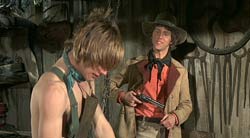 With
these words, the protagonist not only defines and summarizes
himself, he also rreveals a clue to the source of the story - Herman
Hesse's novel Siddartha,
in which the eponymous hero summarizes his skills thus; "I can
think; I can wait; I can fast." (This is related to another saying of
his: "Writing is good, thinking is better. Cleverness is good, patience
is better. Eating is good, fasting is better.")
With
these words, the protagonist not only defines and summarizes
himself, he also rreveals a clue to the source of the story - Herman
Hesse's novel Siddartha,
in which the eponymous hero summarizes his skills thus; "I can
think; I can wait; I can fast." (This is related to another saying of
his: "Writing is good, thinking is better. Cleverness is good, patience
is better. Eating is good, fasting is better.")Not surprisingly, the restless Zachariah becomes as disatisfied with his service under Belle Starr as he was with his previous occupations. Next, he finds an Old Hermit, a wonderful soul full of compassion, joy of life and scientific curiosity. In keeping with his philosophy of pacifism and contemplation, this sage teaches him the joys of veganism. As he learns the Hermit's path, Zachariah also learns to prepare very appealing salads. Zachariah's main concern then becomes how to save Matthew from his path of destruction, a bigger challenge than salad-making.

--Benjamin Urrutia
Did You Miss This One?: Toro!
Toro!
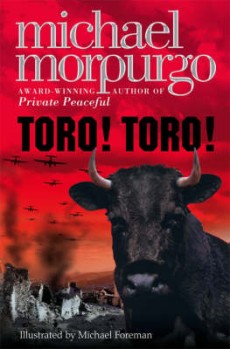 Morpurgo, Michael.
Toro! Toro! Illustrated
by Michael Foreman. HarperCollins UK. 2001, 2002, 2010. 130
pp.
Morpurgo, Michael.
Toro! Toro! Illustrated
by Michael Foreman. HarperCollins UK. 2001, 2002, 2010. 130
pp.
The black bull who featured in the "Glimpse of the Peaceable Kingdom" in last month's Peaceable Table is Fadjen, formerly the ‘mascot’ of CRAC, the French anti-bullfight organisation (See CRAC www.anticorrida.com ) which I support--I ‘adopted’ Fadjen last year when he was a baby calf whom Christophe Thomas bought and brought to live at his farm in Brittany. Christophe, at the age of seven or eight, had been taken to a grocer’s shop where a bullfighting poster was displayed. At first he was unaware of what that involved; later, having found out, he vowed ‘I shall save that bull!’
Fadjen is a bull of a Spanish "fighting
race," born in France in 2010. But like Ferdinand of the
1936 children's book and the 1938 Disney animated film, his character
is described as peaceful and playful--as the DVD of him and Christophe
clearly shows. The story of their friendship led me to re-read
Michael Morpurgo’s book for children aged 8-10, of which readers
might like a reminder.
Toro! Toro! is the tale of a
young boy growing up in Andalucia in 1936 as the Spanish Civil War
erupts. Antonito rears a motherless calf whom he names Paco on his
father’s farm, and they become friends, but his family protects
him from the true facts of the fate of the black bulls. Indeed he is
encouraged to think of the corrida
as a dance in which the bulls participate – “it’s a dancing game, isn’t
it?” I cried. “They don’t really kill the bulls. Tell me they don’t.”
Attending his first fight, at which his beloved uncle Juan – tellingly
named The Dancer - fights the bulls, provokes a traumatic response; he
resolves to protect Paco, which proves impossible to do without freeing
all his father’s bulls.
Catastrophe erupts into his life. The story of the bombing of
Antonito’s village by the Nationalists, the destruction of the family
farm, the deaths of most of his family, and his joining up with the
Republican Resistance is told in an accessible, pacey style – a young
boy’s narrative of being forced by circumstances to grow up too fast.
The two threads of his story now link up. Fighters tell of a young
fighting bull, The Black Phantom, who has espoused the Republican side
and comes and goes mysteriously, leaving his hoof prints
behind. After the war, while cutting cork in the forests,
Antonito, now nineteen,
falls asleep and dreams of Paco. He wakens to see hoof prints on the
ground beside him and feels the bull’s warmth on the flattened grass .
. . .
“A poignant tale, simply told, about the horror of the Spanish
Civil War and the noble cruelty of bullfighting.” This was The Sunday Telegraph’s critique of
the book. It is not as easy these days to characterise the
bullfight in such an
ambivalent fashion. The 2002 and 2004 editions of the book feature a
cover image of Antonito in Uncle Juan’s suit of lights; the 2010
version depicts Paco, the noble black bull, against an apocalyptic red
background – the colour of fire and blood, emblematic of both the
horrors of Civil War and the bullring.
--Marian Hussenbux
Recipes
Millet - Red Quinoa LoafServes 4 - 6
1 cup millet, rinsed
½ cup red quinoa, rinsed
3 cups filtered water
1/4 cup extra virgin olive oil
1 medium onion, finely chopped
2 carrots, grated
3/4 tsp sea salt, or to taste
3/4 tsp. ground "poultry" seasoning
freshly ground black or white pepper, to taste
3/4 cup chopped walnuts
Spray 8 inch x 11 inch glass baking dish with non-stick cooking spray. In medium sauce pan warm 2 T. olive oil, add onion, and carrot. Cook over medium-high heat until onion is translucent. Add millet, red quinoa, water, sea salt, black pepper, and poultry seasoning. Bring to a boil. Cover sauce pan, reduce heat to simmer. Simmer for 30 minutes - or until water is absorbed. Stir in walnuts and 2 T. extra virgin olive oil. Mix well.
Preheat oven 350° F. Spread into prepared 8 inch x 11 inch baking dish. Bake until golden and begins to become crispy on top, about 20 minutes. Serve immediately by cutting into squares. Serve with a good vegan gravy, or white sauce.
-- Angela Suarez
makes about 2 1/2 cups
2 cups soy milk, plain
3 T. Earth Balance buttery substitute
3 T. organic unbleached all- purpose flour (OR 3 T. brown rice flour for gluten free white sauce)
1/2 tsp. sea salt, or to taste
freshly ground black pepper, to taste
1/4 tsp. fresh ground nutmeg
1/2 tsp. whole black peppercorns
1 bay leaf
thick slice onion
Heat soy milk in saucepan and infuse it with black peppercorns, nutmeg, bay leaf, onion-- just drop the herbs and spices in the soy milk. Do not let soy milk boil, but keep it hot. Allow flavors to infuse for at least 20 minutes; then strain to remove solids.
In another saucepan melt the Earth Balance over medium heat. When it is bubbling, add the flour all at once, stirring constantly with a whisk. Let the mixture cook for 3 minutes. Careful--do not let it burn or scorch. Remove pan from heat and add the strained hot soy milk, stirring the entire time. Add sea salt and freshly ground black pepper, to taste. Put the sauce back on the heat, and stir constantly until it begins to boil. Lower the heat and cook the sauce, stirring, until it is thick and glossy. Use immediately.
If you want to keep it for later: using Earth Balance, grease a piece of wax paper and push it, Earth Balance side down, onto the surface of the sauce to keep all air off the surface of the sauce. It can be stored in the refrigerator for several days.
The sauce can be made thinner or thicker simply by adding more or less of the liquid or solid ingredients. If sauce is too thick, add a little hot soy milk and mix well, returning to heat if necessary. If the sauce is too thin, cook it longer over low heat, being careful not to let it scorch.
-- Angela Suarez
Poetry: Harvey Gillman, J. R. R. Tolkien, 1892-1973
Meeting at GlenthorneWe met in silence, the cows and I,
in the long wet grass, in worship they,
ruminating I. They sat. I stood
by the wooden fence that set apart
the sprawling house from the winding path
that climbed in awe to the passing clouds.
Again I saw the hill I climbed before,
angels ascending, descending,
stepping lightly on the unploughed earth.
From time to time the cows gave ministry
--a snort, a shuffling, a flick of tail.
I waited with cool reverence
upon the herd's hard wisdom.
Their eyes were heavy
with eternity and rain.
They sat with grace
Upon the damp earth beneath.
Time enough for miracles.
--H. G.
The author is a member of the Sussex West Area Meeting of Friends. Reprinted with permission from the author and Quaker Concern for Animals.
Far Over the Misty Mountains . . .
Far over the misty mountains cold
To dungeons deep and caverns old
We must away 'ere break of day
To seek the pale enchanted gold.
The dwarves of yore made mighty spells,
While hammers fell like ringing bells
In places deep, where dark things sleep,
In hollow halls beneath the fells.
For ancient king and elvish lord
There many a gleaming golden hoard
They shaped and wrought, and light they caught
To hide in gems on hilt of sword.
On silver necklaces they strung
The flowering stars, on crowns they hung
The dragon-fire, in twisted wire
They meshed the light of moon and sun. . . .
The pines were roaring on the height,
When Smaug swept down in ruddy night;
His breath was red, the burning spread
The trees like torches blazed with light.
The bells were ringing in the dale
And men looked up with faces pale;
The dragon's ire more fierce than fire
Laid low their towers and houses frail.
The mountains smoked beneath the moon;
The dwarves, they heard the tramp of doom,
They fled their hall to dying fall
Beneath his feet, beneath the moon.
Far over the misty mountains grim
To dungeons deep and caverns dim
We must away, 'ere break of day,
To win our harps and gold from him!
--J. R. R. T. (altered)
The journal is intended to be interactive; contributions, including illustrations, are invited for the next issue. Deadline for the May issue will be April 25. Send to graciafay@gmail.com or 10 Krotona Hill, Ojai, CA 93023. We operate primarily online in order to conserve trees and labor, but hard copy is available for interested persons who are not online. The latter are asked, if their funds permit, to donate $12 (USD) per year. Other donations to offset the cost of the domain name and server are welcome.
Website: www.vegetarianfriends.net
Editor: Gracia Fay Ellwood
Book and Film Reviewers: Benjamin Urrutia and Robert Ellwood
Recipe Editor: Angela Suarez
NewsNotes Editors: Lorena Mucke and Marian Hussenbux
Technical Architect: Richard Scott Lancelot Ellwood
